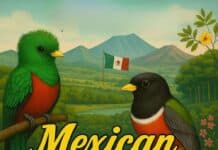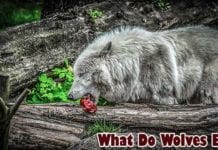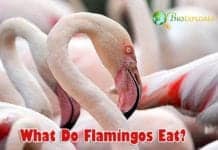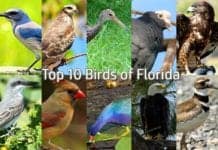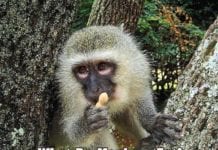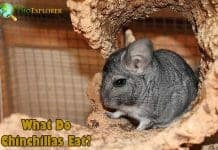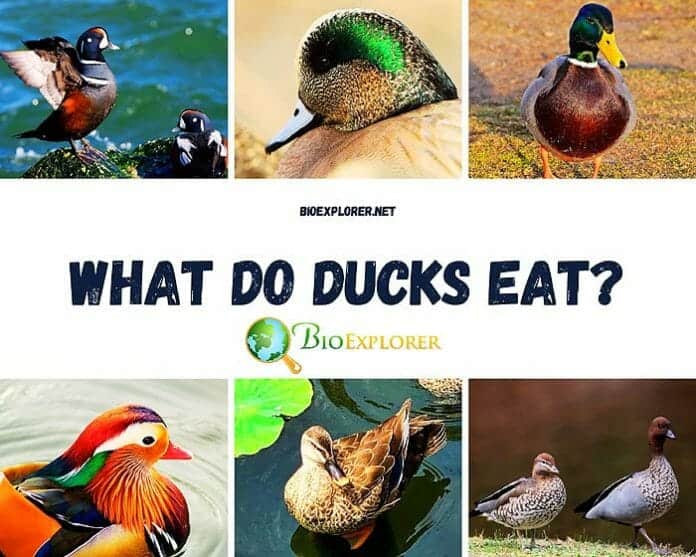
Ducks are a diverse group of waterfowl birds found across most of the world. Around 130 to 140 different species of ducks inhabit wetlands and waterways on every continent except Antarctica[1]. This variety of duck species fills an important ecological niche as prey and predators in aquatic food chains.
To survive and thrive, each duck species has evolved adaptations to take advantage of the food sources available in their habitats. As a result, what ducks eat can vary widely depending on their environment, the time of year, and the stage of their life cycle. However, most ducks are omnivores and have a flexible, opportunistic diet.
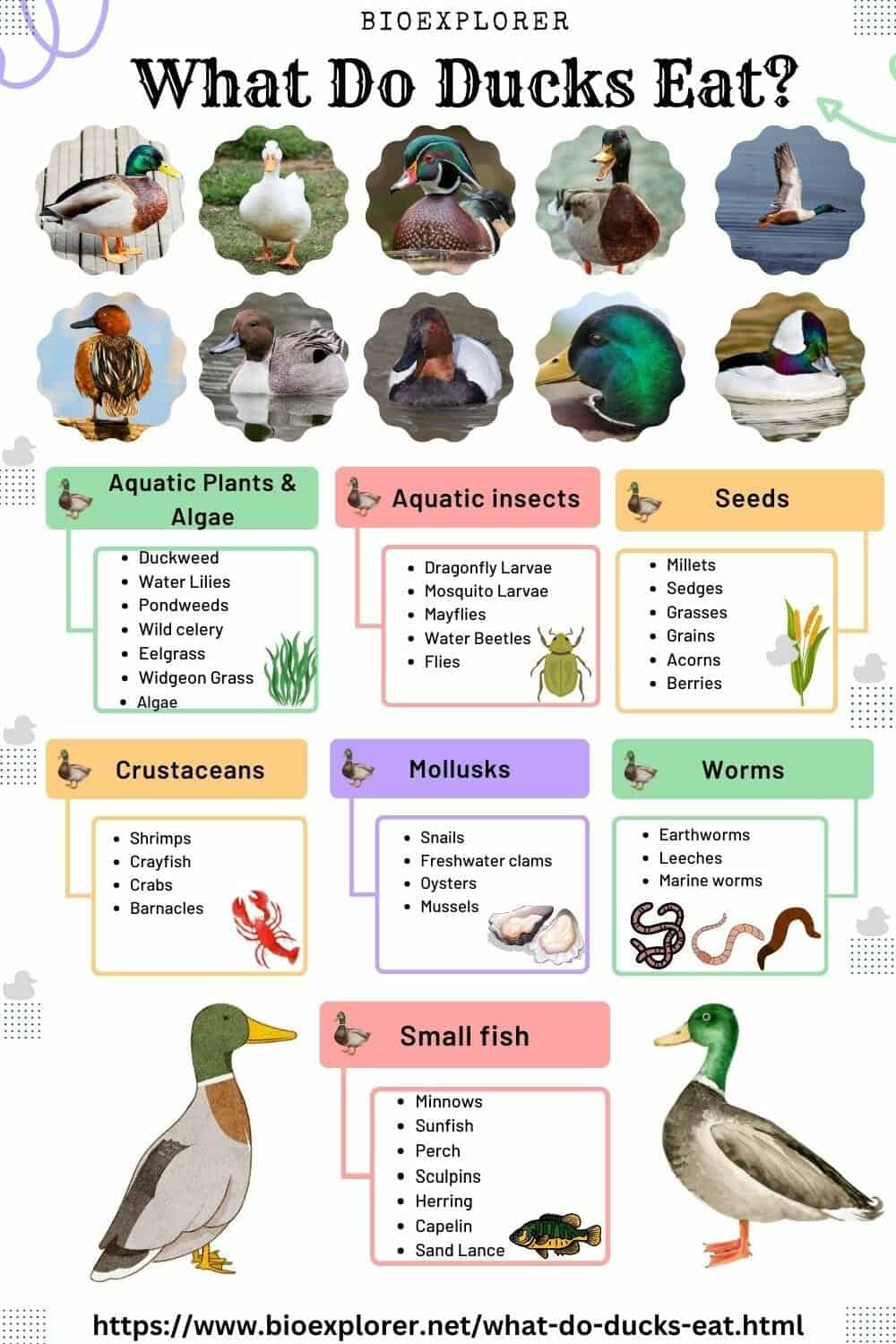
Ducks are classified under the family Anatidae, alongside swans and geese.
Understanding the dietary needs of ducks is important for anyone interested in bird ecology or those caring for domestic ducks. This page will provide a comprehensive overview of the natural duck diet in the wild, the nutritional requirements of ducks, what domesticated ducks eat, and responsible duck feeding tips.
Key questions explored include:
- What are the main components of a wild duck’s diet?
- How do baby ducklings meet their dietary needs?
- What do domesticated pets or farm ducks eat?
- What nutrients are most important for duck health?
- How does duck diet change across seasons and habitats?
- What are some common myths and fun facts about feeding ducks?
Whether you want to enrich the habitat for local duck populations or properly nourish ducks in your care, understanding what ducks eat is essential. Read on for complete details on duck diet and nutrition.
Table of Contents
- Natural Diet of Wild Ducks
- What Do Ducks Eat in the Wild?
- What Do Northern Pintails Eat?
- What Do Mallard Ducks Eat?
- What Do Wood Ducks Eat?
- What Do American Wigeon Ducks Eat?
- What Do Mandarin Ducks Eat?
- What Do Harlequin Ducks Eat?
- Key Nutrients Ducks Need
- What Do Baby Ducks Eat?
- Domestic Duck Diets
- What Vegetables Can Ducks Eat?
- What Grains Can Ducks Eat?
- Factors Influencing Duck Diet
- Common Duck Diet Myths
- Responsible Duck Feeding Tips
- Commercial Duck Pellets
- Fun Facts About Duck Diets
- FAQs
- What should I feed ducks instead of bread?
- What food is good for ducks?
- Can I feed ducks bread at my local park?
- How to feed ducks and geese in a pond?
- Are there tips for feeding ducks?
- What can I feed my pet duck?
- What do dabbling ducks eat?
- What do backyard ducks like to eat?
- What do I feed wild ducks?
- What do diving ducks eat?
- Conclusion
Natural Diet of Wild Ducks
In their natural habitats, wild ducks are omnivores and eat diverse foods based on seasonal availability, habitat, and foraging abilities. The duck species that dabble and filter food from the water’s surface have a different diet than diving ducks that catch fish and invertebrates underwater. However, most wild ducks consume plants, seeds, aquatic invertebrates, and small fish.
![]()
What Do Dabbling Ducks Eat?
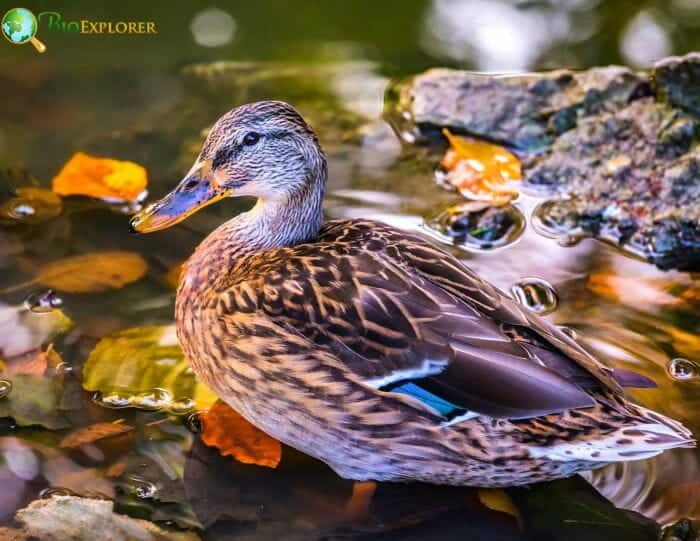
Dabbling ducks like mallards, pintails, wigeons, and teals float on the water’s surface and tip headfirst down to feed underwater. They do not fully dive or swim underwater to catch food. Dabbling allows them to strain food sources from bottom sediments.
Some common foods dabbling ducks feed on include[2]:
- Aquatic plants – Dabblers consume pondweeds, Wild Celery, wigeon grass, widgeon grass, eelgrass, and algae. They ingest leaves, stems, tubers, and seeds near the surface.
- Aquatic invertebrates – Dabbling ducks eat aquatic macroinvertebrates like insects, mollusks, and crustaceans near the surface or in upper-bottom sediments. Common items include dragonfly larvae, caddisfly larvae, shrimp, snails, and other larval forms.
- Seeds – An important part of their diet is seeds from aquatic and terrestrial plants. Dabbling ducks will feed on seeds from grasses, sedges, smartweeds, millets, and agricultural grains.
- Aquatic insects – Adult and larval forms of aquatic insects like midges, mosquitoes, caddisflies, beetles, and water boatmen are consumed.
- Gastropods – Snails, limpets, and freshwater bivalves are eaten by dabbling ducks. Their serrated bills help extract the animals from their shells.
- Tadpoles – tadpoles and small frogs are opportunistically consumed by dabbling ducks.
Their technique of tipping tail-up to strain food items from the water column and sediments allows them to feed on the abundant plant and small animal life in shallow wetland habitats.
![]()
What Do Diving Ducks Eat?
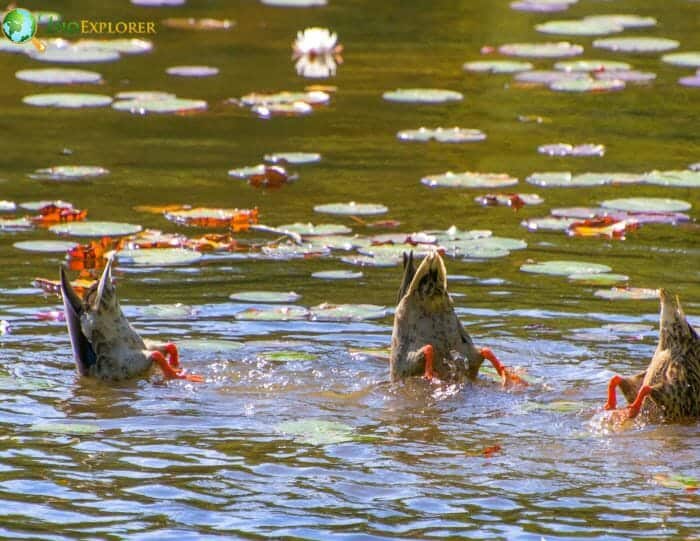
Diving ducks like canvasbacks, scaups, mergansers, and ruddies fully submerge under the water to catch food, typically submerged for 30-60 seconds. Their streamlined body shape and strong legs adapted for swimming and diving allow them to plunge down and find food sources inaccessible from the surface.
Some common foods diving ducks forage for underwater include:
- Aquatic plants – Diving ducks consume submerged aquatic vegetation like pondweeds, wild celery, widgeon grass, eelgrass, and algae. They ingest many plant parts, including leaves, stems, tubers, and seeds.
- Mollusks – A major component of diving duck diets is freshwater and saltwater mollusks like snails, clams, mussels, and oysters. Their muscular gizzards allow them to crush shells.
- Crustaceans – Crustaceans like shrimp, crayfish, crabs, and other aquatic macroinvertebrates are key protein sources for diving ducks.
- Insects – Diving ducks will eat larval and adult forms of aquatic insects like caddisflies, mayflies, beetles, and water boatmen.
- Fish – Small whole fish like minnows and perch are consumed by diving ducks. Their serrated bills help grip slippery prey.
- Amphibians – Tadpoles and frogs are eaten opportunistically by diving ducks.
Their ability to dive deep gives them access to nutrient-rich benthic foods unavailable to dabbling ducks. This allows different diving duck species to partition resources in the same habitat. Their specialized adaptations allow them to thrive on an underwater carnivorous diet.
![]()
What Do Sea Ducks Eat?
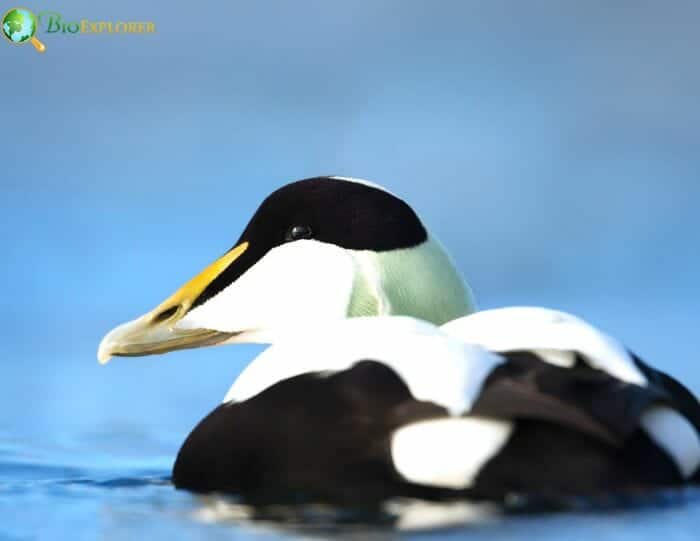
Sea ducks inhabit marine coastal habitats and dive to depths up to 60 feet to find food along rocky shorelines, intertidal zones, and shallow bays. Their diets specialize in foraging on the macroinvertebrates and vegetation of these habitats. Some key foods include:
- Mollusks – Bivalves like clams, mussels, scallops, oysters, and snails are a major part of the sea duck diet. Their bills help pry open shells.
- Crustaceans – Crustaceans like shrimp, amphipods, crabs[3], isopods, crab larvae, and barnacles are consumed by sea ducks diving near ocean floors.
- Echinoderms – Sea urchins, sand dollars, and sea cucumbers are preyed upon by sea ducks.
- Fish – Small fish like herring, capelin, sand lance, and sculpins are eaten.
- Aquatic plants – Some kelp, seagrasses, and algae are directly consumed through a smaller portion of the diet than invertebrates.
- Plankton – Some sea ducks sieve tiny zooplankton like copepods from the water.
Sea ducks like eiders, scoters, longtails, and mergansers are specially adapted to thrive on northern marine waters’ salinity, temperatures, and food sources. Their diets reflect the ecology of these challenging coastal environments.
![]()
What Do Stiff-tailed Ducks Eat?
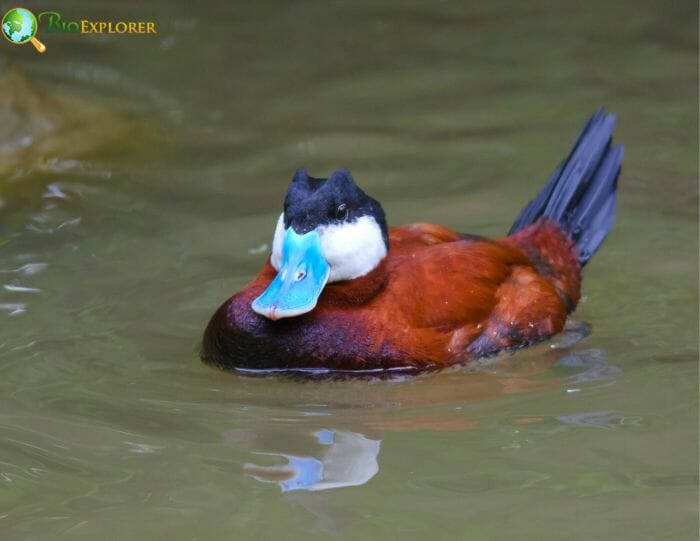
Stiff-tailed ducks like the ruddy duck have long, stiff tail feathers used as rudders when they dive to catch food. Their diet and foraging are similar to diving ducks but adapted to different inland waterway habitats. Some key foods include[4]:
- Aquatic plants – Stiff-tails eat pondweed, watermilfoil, muskgrass, and other submerged vegetation, similar to many diving ducks.
- Insects – Beetles, dragonfly larvae, caddisfly larvae, and other aquatic insect larvae are important protein sources, as with diving ducks.
- Mollusks – Snails, clams, and other small freshwater mollusks are consumed, providing calcium, as seen in diving ducks.
- Crustaceans – Freshwater shrimp, amphipods, isopods, and other aquatic crustaceans supplement their diet.
- Seeds – The vegetation seeds in calm ponds help comprise their diet, unique from most diving ducks.
Stiff-tailed ducks forage by diving and dabbling in shallow freshwater ponds and marshes, focusing on abundant aquatic plant and animal life. Their unique tails aid underwater agility. Their diet reflects adaptations to inland waterway habitats.
![]()
What Do Goose-like Ducks Eat?
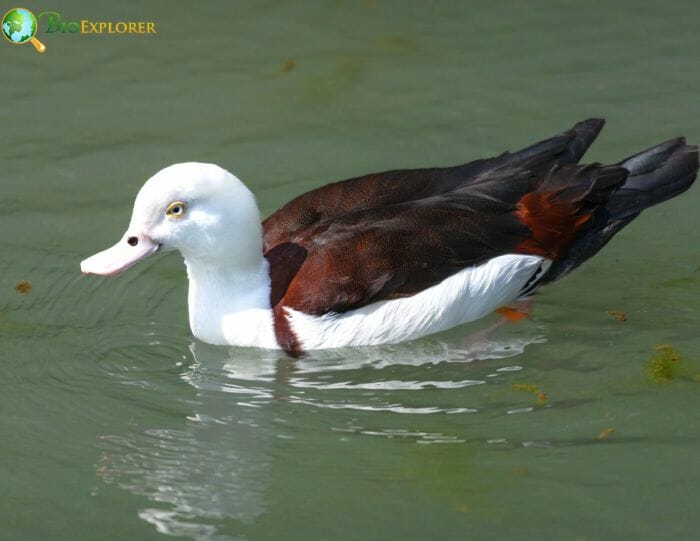
Goose-like ducks such as the shoveler and shelducks have anatomical adaptations suited to grazing on land similar to geese. Their diet reflects[5] this terrestrial foraging strategy:
- Aquatic plants – Goose-like ducks feed extensively on aquatic plants near the water’s edge, including grasses, sedges, and pondweeds.
- Seeds – Seeds of terrestrial and aquatic plants are consumed, including millets, grains, marsh plants, and agricultural seeds.
- Insects – Some insects and their larvae, such as beetles, flies, moths, and ants, are opportunistically eaten.
- Crustaceans – Goose-like ducks will eat small freshwater shrimp and other crustaceans while swimming and filtering water.
- Algae – Grazing on algal mats supplements their diet with protein.
![]()
What Do Perching Ducks Eat?
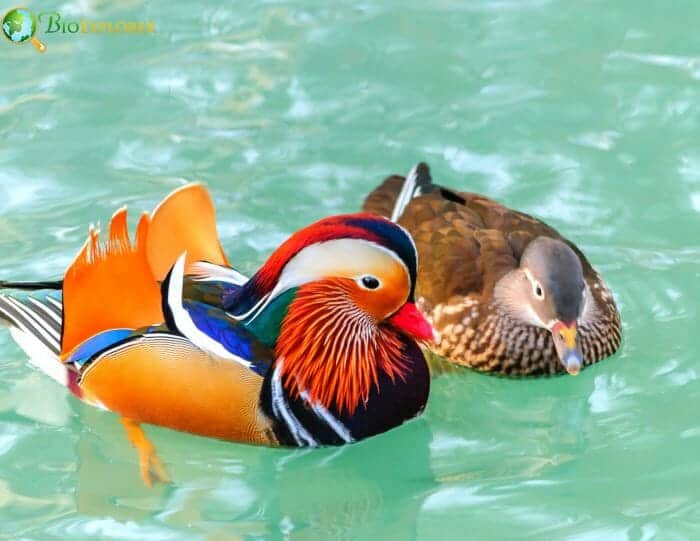
Perching ducks like wood ducks and mandarins live near water but perch in trees and nest in tree cavities. Their diet reflects an ability to forage[6] both in water and on land:
- Aquatic plants – Perching ducks feed on aquatic vegetation like duckweed, pondweeds, and algae near the water surface.
- Acorns & tree fruits – Nuts, acorns, fruits, and berries from nearby trees provide abundant nutrients.
- Seeds – The seeds of aquatic and terrestrial plants are consumed.
- Insects – Aquatic insects like dragonflies and damselflies and terrestrial insects are eaten.
- Minnows, sunfish, and other small fish are opportunistically consumed.
Perching ducks are generalist feeders, taking advantage of nutrients from both land and water habitats thanks to their tree-perching lifestyle. Their varied diet provides balanced nutrition from multiple ecosystem food webs.
![]()
What Do Ducks Eat in the Wild?
To understand what ducks eat in the wild, looking at their natural diet and foraging behaviors within their habitats is important. Wild ducks are omnivores and take advantage of the seasonal abundance of various food sources in their wetland and aquatic environments.
Their ability to forage on land and water gives ducks a nutritious and diverse diet. The specific components of a wild duck’s diet depend on:
- Species: Dietary differences based on a duck’s taxonomy and adaptations. For example, dabbling ducks vs. diving ducks.
- Habitat: Food availability in freshwater marshes, swamps, ponds, rivers, lakes, and coastal marine areas.
- Season: Changes in food sources from summer to winter. More insect consumption in summer.
- Age: Ducklings and juvenile ducks have different nutritional needs.
- Location: Regional and geographic differences in plant life and prey populations.
Some key elements of a wild duck’s diet can include:
Plants
- Aquatic plants: Duckweed, pondweeds, eelgrass.
- Algae: Green algae, phytoplankton.
- Terrestrial plants: Grasses, sedges, berries.
![]()
Invertebrates
- Mollusks: Snails, freshwater clams.
- Crustaceans: Shrimp, crayfish, crabs.
- Insects: Dragonfly larvae, beetles, flies.
- Worms: Earthworms, leeches
![]()
Vertebrates
- Fish: Minnows, sunfish, perch.
- Amphibians: Tadpoles, frogs
- Small rodents: Mice, voles.
![]()
Seeds
- Millets, sedges, pondweed, widgeon grass.
- Acorns, grain seeds
Foraging behaviors like dabbling, grazing, filtering, and diving allow ducks to take advantage of all these food sources available in their habitat, depending on the season. Their versatile diet is key to their ability to thrive in diverse wetland environments.
![]()
What Do Northern Pintails Eat?
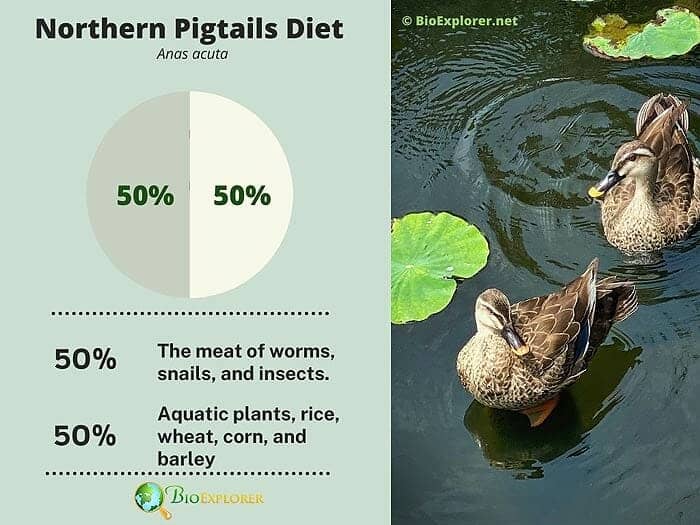
Diet: Northern pintails are omnivores, feeding on a diet of meat and plant matter, depending on their availability. About 50% of their diet comprises meat, while plant materials supplement the other 50%. They draw their nutrients from eating the following items: worms, snails, insects, aquatic plants, rice, wheat, corn, and barley.
| Animalia | anseriformes | Anatidae | Anas | Anas acuta |
Hunting Techniques:  Filter-feeding is the feeding strategy used by northern pintails.Their bills are serrated, making them perfect for sifting food from the water.
Filter-feeding is the feeding strategy used by northern pintails.Their bills are serrated, making them perfect for sifting food from the water.
Where can it be spotted? ![]() Northern pintails breed in Alaska, to the Great Lakes, Northern New England, and the Central Great Plains. This bird is also likely found in southern Asia, Northern Africa, and Europe. Its preferred habitat is open country with wetlands. These bird winters in freshwater like streams, marshes, ponds, lakes, rivers, and canals.
Northern pintails breed in Alaska, to the Great Lakes, Northern New England, and the Central Great Plains. This bird is also likely found in southern Asia, Northern Africa, and Europe. Its preferred habitat is open country with wetlands. These bird winters in freshwater like streams, marshes, ponds, lakes, rivers, and canals.
![]()
What Do Mallard Ducks Eat?
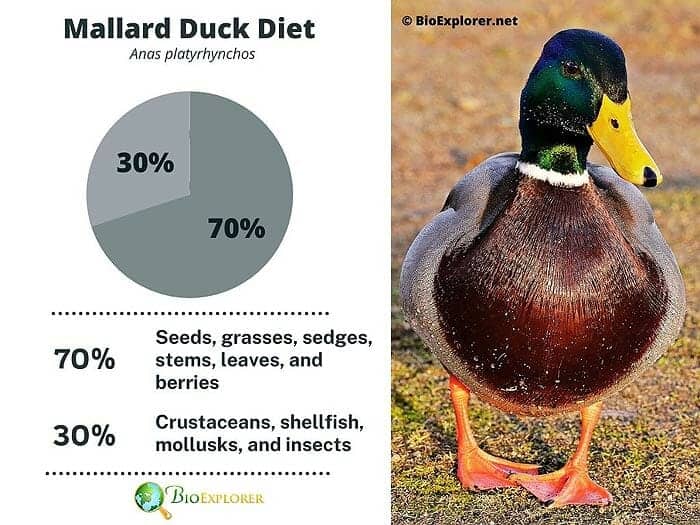
Diet: Mallards are omnivorous, whose diet includes seeds, grasses, sedges, stems, leaves, berries, insects, and shellfish. Thus, about 70% of their diet comprises plant matter. The other 30% comprises crustaceans, mollusks, and insects, which it occasionally consumes, especially when it is young.
| Animalia | Anseriformes | Anatidae | Anas | Anas platyrhynchos |
Hunting Techniques:  The strategy used by this bird to look for food is dabbling over water.
The strategy used by this bird to look for food is dabbling over water.
Where can it be spotted? ![]() Mallards can commonly be spotted in North America, Europe, and Asia, mainly freshwater habitats. However, these ducks also inhabit brackish and saltwater.
Mallards can commonly be spotted in North America, Europe, and Asia, mainly freshwater habitats. However, these ducks also inhabit brackish and saltwater.
![]()
What Do Wood Ducks Eat?
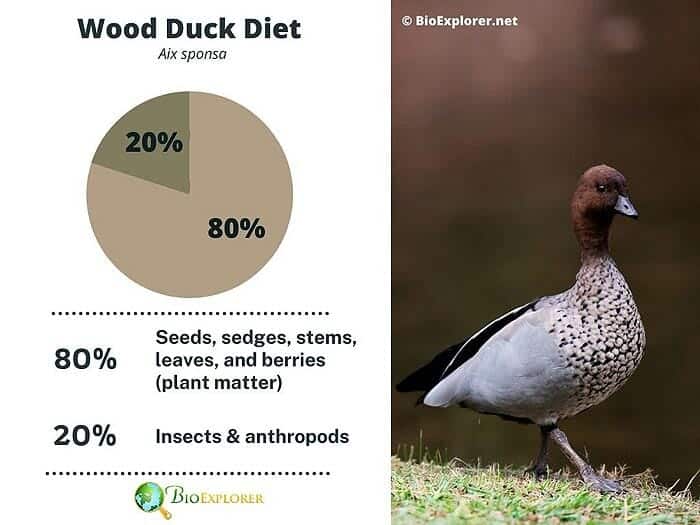
Diet: The wood duck’s diet comprises seeds, insects, fruits, and arthropods. Thus, about 80% of their diet is made up of plant matter, while nutrients from meat supplement the other 20%.
| Animalia | Anseriformes | Anatidae | Aix | Aix sponsa |
Hunting Techniques:  Wood ducks find their food by dabbling or making short dives into the water to capture their prey.
Wood ducks find their food by dabbling or making short dives into the water to capture their prey.
Where can it be spotted? ![]() The wood duck can be spotted in North America.However, it is most common in the eastern parts of the Great Plains, British Columbia, and the Pacific Coast states.
The wood duck can be spotted in North America.However, it is most common in the eastern parts of the Great Plains, British Columbia, and the Pacific Coast states.
![]()
What Do American Wigeon Ducks Eat?
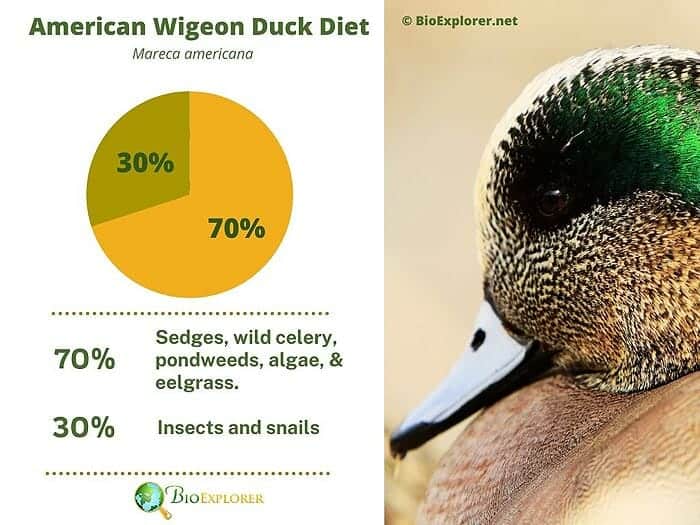
Diet: Their diet is mainly composed of plant material. They eat sedges, wild celery, pondweeds, algae, and eelgrass, which constitutes about 70% of their diet. The other 30% of their nutrients are obtained from insects and snails. Younger ducklings eat more of the insects, which is strategic because it helps them get the energy to grow.
| Mareca americana |
Hunting Techniques:  American wigeons can immerse themselves in the water, chasing after their prey.
American wigeons can immerse themselves in the water, chasing after their prey.
Where can it be spotted? ![]() The American wigeon can be spotted in Alaska, Canada, Mexico, and Northern parts of South America. This bird is common in slow-moving rivers, freshwater wetlands, lakes, bays, marshes, estuaries, and flooded fields.
The American wigeon can be spotted in Alaska, Canada, Mexico, and Northern parts of South America. This bird is common in slow-moving rivers, freshwater wetlands, lakes, bays, marshes, estuaries, and flooded fields.
![]()
What Do Mandarin Ducks Eat?
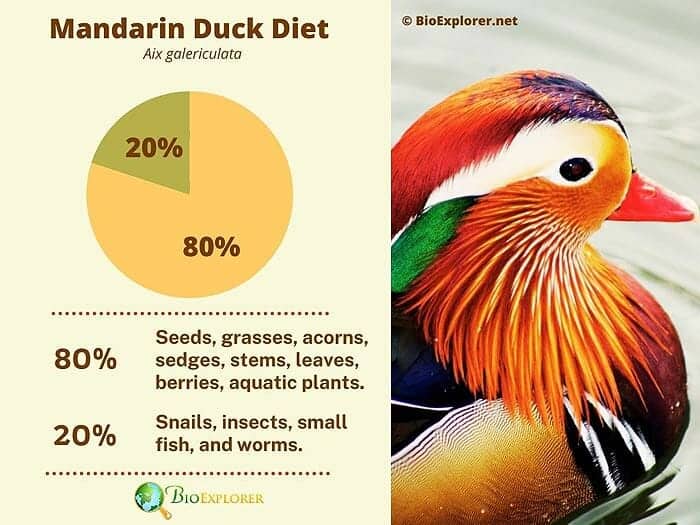
Diet: The Mandarin ducks are omnivores. They feed on small fruits, seeds, and acorns. They also consume snails, insects, and small fish. About 80% of their diet comprises seeds and plants, while the other 20% is supplemented by meat. One key fact about the Mandarin ducks is that they change their diets depending on the season. During the harsh cold winters, when insects, worms, and snails are hard to find, these ducks tend to eat plant matter, and in the warmer seasons, they mostly eat aquatic plants and meat from fish, snails, worms, and insects.
| Animalia | Anseriformes | Anatidae | Aix | Aix galericulata |
Hunting Techniques:  Mandarin ducks find their food by dabbling.These ducks have also been observed to stalk their prey on land.
Mandarin ducks find their food by dabbling.These ducks have also been observed to stalk their prey on land.
Where can it be spotted? ![]() The Mandarin duck can be found in the far east, like China, Korea, Japan, and some parts of Russia. This duck inhabits temperate forests near wetlands, such as marshes, bogs, streams, freshwater lakes, and rivers in these countries.
The Mandarin duck can be found in the far east, like China, Korea, Japan, and some parts of Russia. This duck inhabits temperate forests near wetlands, such as marshes, bogs, streams, freshwater lakes, and rivers in these countries.
![]()
What Do Harlequin Ducks Eat?
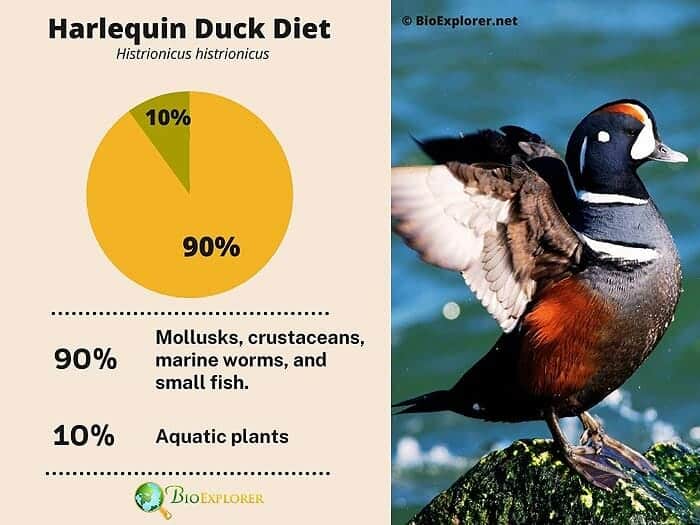
Diet: Harlequin ducks are omnivorous. They mainly eat mollusks and crustaceans, which is no surprise because they are the most abundant at sea, where this duck commonly inhabits. They also eat some small fish and marine worms. For the ducks commonly found next to rivers, their diet entails aquatic insects and some aquatic plants. In this regard, it is evident that about 90% of this duck’s diet is composed of meat protein, while aquatic plants supplement the other 10%.
| Animalia | Anseriformes | Anatidae | Histrionicus | Histrionicus histrionicus |
Hunting Techniques:  The harlequin duck tends to dive into the water to find prey. In other cases, they dabble and sieve food.
The harlequin duck tends to dive into the water to find prey. In other cases, they dabble and sieve food.
Where can it be spotted? ![]() The harlequin duck occupies two ranges, the Pacific coast (Maryland, Idaho, Wyoming, northern Yukon, and western Alaska) and the Atlantic coast (Baffin Island, Iceland, Greenland, eastern Quebec, and Northern Newfoundland). This duck inhabits small cliffs in these areas, tree stumps found along the rocky shores, and tree cavities.
The harlequin duck occupies two ranges, the Pacific coast (Maryland, Idaho, Wyoming, northern Yukon, and western Alaska) and the Atlantic coast (Baffin Island, Iceland, Greenland, eastern Quebec, and Northern Newfoundland). This duck inhabits small cliffs in these areas, tree stumps found along the rocky shores, and tree cavities.
![]()
Key Nutrients Ducks Need
Like all animals, ducks require a balanced diet that provides the essential vitamins, minerals, and nutrients for growth, maintenance, and reproduction. Some of the most important dietary nutrients for duck health include:
Protein
- Needed for muscle development and feather growth.
- Sources include insects, fish, and aquatic invertebrates.
- Provides ducks with energy for flying, swimming, and foraging.
- Obtained from aquatic plants, seeds, and grains.
![]()
Calcium
- Essential for bone health and density.
- Found in mollusks, crustaceans, and some plants.
![]()
Fiber
- Aids digestion and nutrient absorption.
- Found in fibrous plant materials.
![]()
Fats
- Concentrated energy source
- Helps ducklings develop an insulating fat layer.
- Obtained from aquatic insects, plants, and fish.
![]()
Vitamins and Minerals
- For immune function, enzyme processes, and development.
- Various food sources are needed to obtain all essential vitamins and minerals.
Ducks have evolved as opportunistic omnivores to seek out different food sources that provide balanced nutrition. However, deficiencies or imbalanced diets can negatively impact duck growth, reproduction, and survival. Their dietary flexibility allows them to thrive across diverse wetland habitats.
![]()
What Do Baby Ducks Eat?
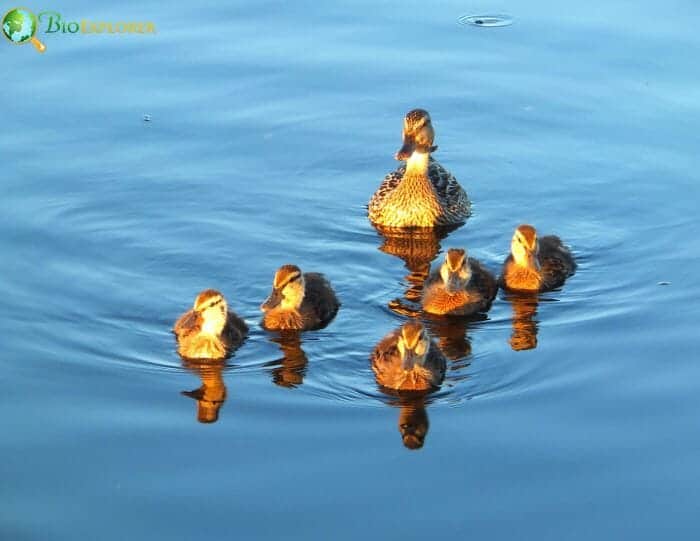
Baby ducklings have specialized nutritional needs that differ from juvenile and adult ducks. Ducklings require a high-protein diet for rapid growth and development for the first few weeks after hatching. Their mother is important in finding food sources to meet their dietary needs.
Duckling Diet
- Insects: Mealworms, maggots, small crickets.
- Aquatic invertebrates: Daphnia, brine shrimp, river shrimp.
- Greens: Finely chopped lettuce, chickweed, grass.
- Starter crumbles: Duck starter feed, chick starter feed.
- Aquatic plants: Small pieces of duckweed, Azolla.
Female ducks lead their young brood to shallow wetland areas rich in the insects, invertebrates, and aquatic plants ducklings need. The high protein content of these foods supports the rapid muscle and feather development occurring in the first weeks.
As ducklings grow, they transition to the adult duck diet. By 2-3 months old, juvenile ducks are increasingly independent and begin foraging independently. Their diet includes more seeds, grains, vegetation, and small vertebrates. Good nutrition is critical through the first year to ensure healthy development.
Providing essential proteins through starter feeds and natural treats is important for domestic ducklings. Their dietary needs shift as they mature, so monitoring their growth and adjusting feed accordingly is recommended.
![]()
Domestic Duck Diets
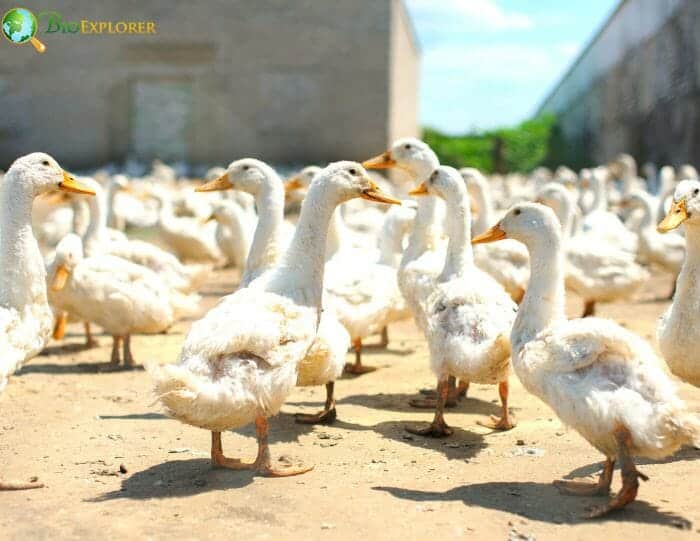
The dietary needs of domestic ducks differ from wild ducks. Since they do not forage for their food sources, care must be taken to provide domesticated pets or farm ducks with a varied, nutritionally balanced diet.
Some key components of domestic duck diets include:
![]()
Commercial Duck Feed
- Specially formulated pellets to meet all nutritional needs.
- Provides balanced proteins, carbs, vitamins, and minerals.
- Needs can vary by age and species.
![]()
Fruits and Vegetables
- Fresh produce like kale, lettuce, peas, corn, squash.
- Chopped finely or mashed for ducklings.
- Provides fiber, carbs, and essential nutrients.
![]()
Insect and Aquatic Treats
- Mealworms, river shrimp, crickets.
- Natural behaviors and protein sources.
- Important supplement for young ducklings.
![]()
Grit
- Small stones and coarse materials.
- Helps grind and digest fibrous foods.
- Can be offered separately as needed.
Fresh drinking water is also essential for duck health and should always be available. Monitoring duck growth, egg-laying ability, and behavior can help determine if adjustments in feed are needed. Providing a diverse, nutrient-rich diet is key to keeping domestic ducks healthy.
![]()
What Vegetables Can Ducks Eat?
Ducks can safely eat various vegetables as a balanced diet. Vegetables provide important vitamins, minerals, and fiber. Some veggies ducks enjoy include:
- Leafy Greens: Kale, lettuce, spinach, swiss chard, cabbage.
- Root Vegetables: Carrots, sweet potatoes, beets, turnips.
- Squash: Pumpkin, butternut, zucchini, acorn squash.
- Legumes: Peas, beans, lentils (cooked).
- Corn: Kernels off the cob.
- Broccoli and Cauliflower: Florets from stems.
Vegetables should be chopped into small pieces for easier eating and digestion. It’s best to introduce new veggies slowly to watch for any adverse reactions.
Some vegetables to avoid or limit due to toxicity risks include:
- Onions: Can cause anemia in ducks.
- Avocados: Persin toxin dangerous for birds.
- Raw beans: Contain hemagglutinin lectin.
- Raw potatoes: Contain solanine.
When fed in moderation along with other diet staples, vegetables can provide great supplemental nutrition for ducks. Monitoring their growth and health is key when introducing new foods.
![]()
What Grains Can Ducks Eat?
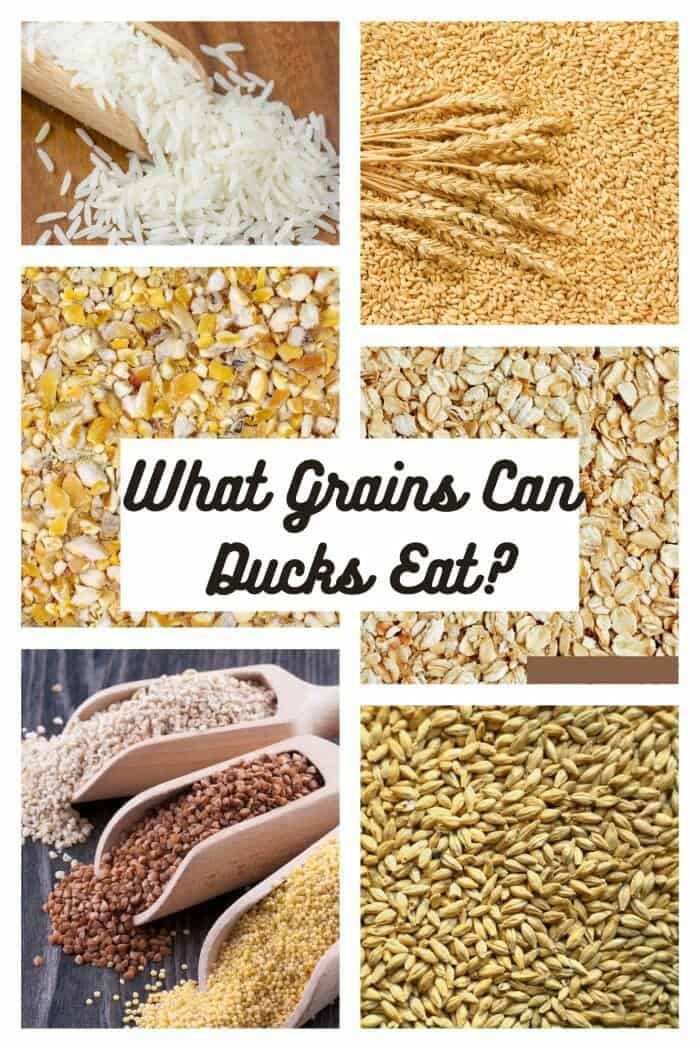
In addition to fruits and vegetables, domesticated ducks can be fed a variety of grains to supplement their diet:
Wheat
- Provides carbohydrates for energy.
- The most common grain used in commercial duck feed.
![]()
Cracked Corn
- High in calories from carbohydrates and fats.
- Color enhances egg yolk pigment.
![]()
Oats
- Whole or rolled oats for fiber.
- Strengthens feather integrity
![]()
Millet
- Easy to digest for ducklings.
- Promotes muscle growth and development.
![]()
Barley
- Highly palatable and nutritious.
- Fermentable for gut health.
![]()
Rice
- Easily consumed when cooked.
- Improves egg hatchability
Grains should be mixed into feed or offered free choice. Good options include wheat berries, whole corn, oat groats, millet seed, and pearl barley. 1-5% of their diet can come from supplemental grains.
Monitor duck health and adjust portions if they become overweight. Grains provide variety and key nutrients when fed properly as a balanced diet.
![]()
Factors Influencing Duck Diet
A duck’s diet is shaped by seasonal changes, habitat, age, location, and species.
Seasonal Changes
Duck diets shift based on food availability across seasons. In summer, warmer temperatures increase fish, insects, and invertebrate populations, which ducks consume more of. In winter, aquatic insects and plants decline, so ducks rely more on grains from agricultural fields and protein-rich acorns.
![]()
Geographic Location
Regional location influences food sources. North American ducks eat more native vegetation, like duck potatoes. In contrast, Asian ducks consume more rice and acorns abundant in their environment. Different climates support different flora and fauna that ducks adapt their diet to.
![]()
Age and Development
Duckling diets focus on protein to rapidly grow muscles and feathers. As they mature, ducks consume more vegetation, seeds, and grains suited to adult nutrition and energy needs. Their diet progresses with age to take advantage of diverse food sources.
![]()
Habitat
Habitats like marshes, swamps, ponds, rivers, and coastal areas contain different plant varieties and prey ducks have adapted to exploit. Diets may focus more on fish in deep lakes, insect larvae in marshes, or marine mollusks in coastal regions based on specialized habitat food webs.
![]()
Species
Duckbill structure, foraging methods, and feeding behaviors target specific diet items. Dabbling ducks filter ponds for vegetation while diving ducks catch fish and crayfish deep underwater. Their evolutionary adaptations shape dietary preferences.
![]()
Common Duck Diet Myths
There are some pervasive myths and misconceptions regarding what ducks can eat. Dispelling these myths is important for ensuring ducks receive proper nutrition in captive and wild settings.
- Bread is Nutritious for Ducks: While ducks eagerly consume bread, it provides little nutritional value and can lead to malnutrition or angel wing deformities. Bread should be avoided in favor of more nutritious treats.
- Ducks Need Gravel or Grit: Ducks do not need gravel or grit. Their specialized digestive system uses sand and small pebbles to grind food, not man-made grit mixes.
- Ducks Eat Only Fish or Plants: Ducks are opportunistic omnivores, not solely carnivores or herbivores. They consume a diverse diet, including plants, seeds, insects, fish, and invertebrates.
- Ducks Can Eat Chicken Feed: While tempting to feed ducks chicken feed, it does not meet their nutritional needs and can lead to deficiencies. Specific duck feed is better.
- All Table Scraps Are Safe: Many human foods like onions, chocolate, and caffeine are toxic. Only nutritious produce should be fed in small quantities.
- Ducks Only Need Water to Swim In: Ducks always require clean drinking water to stay hydrated, not just for swimming. Lack of drinking water can lead to dehydration.
- Wild Ducks Will Not Starve Without Handouts: Healthy wild duck populations are fully capable of sustaining themselves without human food. Handouts often do more harm than good.
- Ducks Eat Large Amounts of Fish: While ducks opportunistically eat small fish, fish comprise a small portion of their diverse diet. More focus is placed on aquatic plants and invertebrates.
- Ducks Need High-Protein Chicken Feed for Egg-Laying: Laying ducks do not require extremely high protein levels like Chickens. 20% protein duck feed provides sufficient nutrition for egg production.
By correcting these common myths, duck owners and wildlife enthusiasts can make better choices in providing care. Understanding proper duck nutrition helps dispel misconceptions.
![]()
Responsible Duck Feeding Tips
For enthusiasts who wish to feed wild or domestic ducks occasionally, it should be done conscientiously to support their health. Here are detailed tips:
- Avoid Empty Calories from Bread, Chips, Popcorn: These human junk foods provide little nutritional value to ducks. They lack protein vitamins and can lead to poor wing development and malnutrition.
- Offer Chopped Produce like Greens, Vegetables, and Berries: Chopped kale, lettuce, peas, corn, berries, and duck-safe fruits offer useful nutrition in moderation. Variety is important; too much of one item causes imbalances. Introduce new foods slowly.
- Soak Seeds, Grains, and Greens in Water: Soaking corn, barley, oats, greens, and vegetables overnight makes them softer and easier to digest for ducks. Their digestive system adapts this way.
- Use Moderation – Treats Should Not Exceed 5% of diet: A duck’s diet should come from natural grazing and foraging. Human handouts should be occasional treats, not dietary staples or substitutes.
- Choose Nutrient-Rich Foods like Insects and Berries: Offering duck-safe foods that provide important vitamins, minerals, and proteins is optimal. Items like mealworms, river shrimp, and chopped berries offer more benefits.
- Don’t Feed Near Roadways or Disrupt Natural Waterway Access: Leading ducks to dangerous roadside areas or altering their natural waterway habits to obtain human food can be detrimental.
- Allow Ducks to Forage and Graze Naturally as Much as Possible: Ducks thrive best when allowed to follow their natural foraging behaviors and eat their wild diet. Dependence on human food disrupts their ecological role.
![]()
Commercial Duck Pellets
Commercial duck feed typically contains pellets formulated with a nutritionally balanced blend of ingredients. Some key components found in quality duck pellets include:
- Grains: Corn, wheat, barley, and oats provide carbohydrates for energy.
- Protein sources: Soybean meal, fish meal, and other proteins fuel growth and development.
- Vitamins and minerals: Essential micronutrients like vitamin D3, calcium, and phosphorus support bone and egg health.
- Binders: Ingredients like molasses and wheat middlings hold the feed together.
When selecting a commercial duck feed, choose a pellet specifically made for ducks, not one formulated for chickens or other poultry. Ducks have different nutritional requirements than other birds.
The ideal nutritional ratios to look for in a complete duck feed are:
- Protein: Minimum 20% for ducklings, 16% for adult ducks. Supports muscle growth and egg production.
- Calcium: 1 to 1.5% for bone development and eggshell quality.
- Phosphorus: 0.5 to 1% to promote bone ossification and growth when paired with calcium.
- Vitamin D3: Essential for calcium absorption and immunity.
Quality duck pellets from reputable manufacturers provide balanced nutrition tailored to a duck’s needs. Feed intake varies based on age, breed, and activity level. Always provide fresh, clean water alongside commercial duck feed.
![]()
Fun Facts About Duck Diets
Duck diets and feeding behaviors have some fascinating aspects. Here are some intriguing facts[7]:
- Ducks have serrated edges on their bills, allowing them to filter tiny plants and animals from mud and water.
- Muscovy ducks do not have a crop to store food like other ducks – so they must eat smaller, more frequent meals.
- Ducks eat about 1/3 pound of food daily but can consume up to 1 pound daily before migrating to build up fat reserves.
- In their first week, ducklings can eat up to 100 insects daily as their main food source.
- Ducks can spend up to 60% of daylight hours foraging for food sources.
- Grasses and sedges comprise up to 20% of a dabbling duck’s annual diet.
- Male ducks losing their flight feathers after mating season may eat up to 90% protein diets to regrow feathers quickly.
- Ducks in the wild ingest around 5-10% grit to help grind and digest fibrous foods and seed husks.
- Duckbills have an extensive network of blood vessels and nerve endings to help them forage by touch.
- New ducklings imprint on their mothers partly by recognizing the calls they make to show them food sources[8].
![]()
FAQs
What should I feed ducks instead of bread?
Avoid feeding ducks bread. It may fill them up but does not contain the nutrients or calories they need to stay healthy. Instead, you can give your ducks feed pellets designed for waterfowl or offer them natural foods like aquatic vegetation, which they also eat.
What food is good for ducks?
Ducks love to eat a wide variety of foods. They eat aquatic plants, insects, fish, eggs, and even leftover food. A common misconception is to feed ducks bread, but it’s unsafe for ducks as it doesn’t offer any nutritional value. Ducks will eat almost anything, but it’s best to feed them natural foods or specially designed-feed pellets.
Can I feed ducks bread at my local park?
Even though ducks at a local park may appear to love bread, you should avoid feeding ducks bread. It’s not good for them and can lead to health problems. Opt for healthier alternatives instead.
How to feed ducks and geese in a pond?
If you feed ducks and geese in a pond, provide them with healthy food. Ducks are omnivorous and eat various things, from aquatic vegetation to insects and small fish. Feed pellets specifically designed for waterfowl could be used for feeding.
Are there tips for feeding ducks?
The best tip for feeding ducks is to use food safe for ducks. Although ducks will eat almost anything, not all foods are healthy or safe. Feed your ducks aquatic vegetation, insects, fish eggs, and feed pellets meant for them. Avoid feeding ducks bread or any leftover food from your meals.
What can I feed my pet duck?
If you have a pet duck, you should also feed it a diet of aquatic plants, insects, and fish eggs. You can also provide specially formulated feed pellets for ducks in pet stores. Ensure to avoid feeding bread as it doesn’t contain the nutrients the ducks need to stay healthy.
What do dabbling ducks eat?
Dabbling ducks, like most ducks, will eat a wide variety of food. They are known primarily for their “dabbling” behavior, feeding in shallow water by tipping to submerge their heads and upper bodies. They primarily eat aquatic plants and sometimes small insects and fish.
What do backyard ducks like to eat?
Backyard ducks like to eat a wide variety of food. If a pond is available, they will enjoy foraging for grass, weeds, insects, small fish, and aquatic plants. Feed pellets designed specifically for waterfowl can also make up a significant part of their diet.
What do I feed wild ducks?
When feeding wild ducks, opt for their natural foods. This could include aquatic vegetation, insects, and even small fish. Do not disturb the natural ecosystem if you are at a local pond. Please do not give the ducks bread or other human food; they don’t offer the necessary nutrients.
What do diving ducks eat?
Diving ducks primarily eat fish and some aquatic vegetation. They have a slightly different feeding behavior from dabbling ducks, as they fully dive under the water to forage for food. It’s best to refrain from feeding diving ducks, as human interaction can disturb their natural feeding habits.
Conclusion
Due to their varied omnivorous diet,
Ducks have evolved as highly adaptable birds that thrive across diverse aquatic and wetland habitats. By understanding the breadth of plants, invertebrates, insects, fish, and other food items ducks have adapted to consume, we gain appreciation for their behavioral flexibility.
A duck’s nutritional needs change based on season, environment, species, age, and other factors. Meeting their dietary requirements allows wild and domestic ducks to prosper and maintain healthy populations. Responsible feeding practices are important for enthusiasts to support duck health.
Ducks are essential in worldwide freshwater, marine, and wetland ecosystems. Their ability to exploit various food sources helps maintain ecological balance. Studying what ducks eat reveals insights into their biology, behavior, and importance for local habitats.


